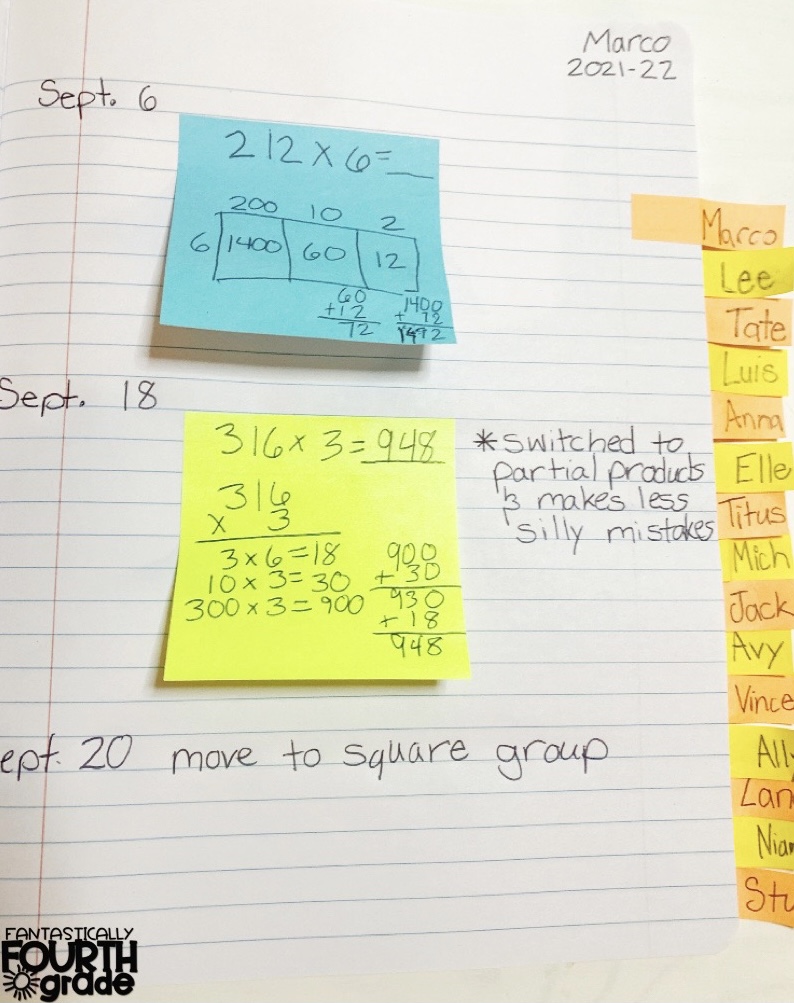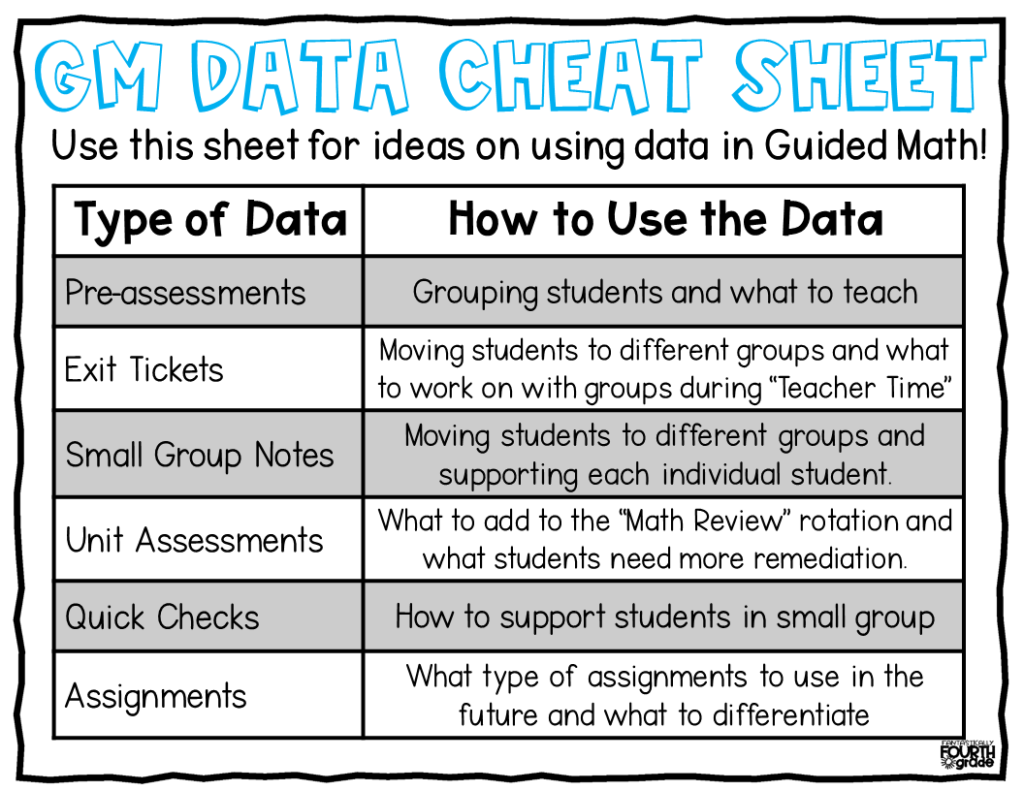If you are a teacher you either love or hate the word data! I actually love data and love talking about how it has helped me successfully use Guided Math in my upper elementary classroom. So, whether you are a lover or hater of data, this post is for you. I will share some of my favorite ways to collect data, and use data that you already have from rotations or the small group data you have collected without spending hours looking it over. The key to spending less time looking at the data is using the data that you already have!
Collecting Data
There are so many different ways to collect data. You may be thinking, “I know how to collect data from assessments, assignments and exit tickets, but how do I easily collect data when working in a small group with students?”. I asked myself that same question and over the years, I have tried out many different ways to collect data. Some ways took way too much time, some took me away from time that I should be working with students and some of them were just way too complicated, but I have found 2 different ways to successfully collect data while working with a small group in rotations. You can read more about them below!
Collecting Data Idea #1: Using a Notebook and Sticky Notes
Collecting student data does NOT need to be complicated and does NOT need a lot of materials! The first way I ever collected data in small groups only included a composition notebook (you can use any notebook, but I prefer a composition) and sticky notes/ notecards. It’s that simple! .
First, I would use bookmark sticky notes to label a section for each student in my notebook. I would divide the amount of pages in the book by the amount of students in my class to know how many pages to put in-between each student. I label the bookmark with the students name, initials or class number (that is up to you). Then, when I do math small groups, I pull out this notebook. At least once a week, I would give students a problem to check their understanding. They would solve it on a sticky note or notecard. When they were done, I would glue/ tape it in the notebook. Sometimes, I would add anecdotal notes if there was something I wanted to remember about how they solved it or how I wanted to continue supporting them. This notebook made it easy to look at students for grouping and how to support them moving forward plus it was a great tool for parent conferences to show some student work! Check out the pictures below to understand this idea for collecting data.


Collecting Data Idea #2: Guided Math Data Binder
This is my favorite way to collect data and what I have used mainly for collecting student data during my small groups! A couple years ago, I knew I needed something that made it easy to add quick anecdotal notes while working with small group of students. So, I created my Guided Math Data Binders! I love this data tool because it is easy to add anecdotal notes, prep at the beginning of the school year and a reference throughout the whole year.
This binder became a daily part of Guided Math in my classroom. I was now able to quickly write anecdotal notes like the strategy the student was using, what the student may need additional support on, if the student should be moved to another group and even when the student had mastered the skill/ standard being taught. I created these note pages for each standard, printed them out and stuck them in a binder. Now, when I work with a small group, I just pull out the binder, place it near me and can easily jot down notes along the way. Click here to read a post on instagram that explains how I keep anecdotal notes in this binder. This is not only my favorite way because of how quick it is to add notes, but it is so useful for looking at data and making decisions based off of the data.

Using the Data You Collected
Now, that we have talked about a couple ways to collect data, it is time to talk about what to do with all this data. Collecting data does not matter if you are not using it! Yep, I said it. We spend so much time collecting data that often gets pushed aside and never used, but I want to help you make sure that does not happen for you in Guided Math. There are so many different ways to use data and there wasn’t a Using Student Data course in my college experience (what about yours?). So, knowing when and what data to use can seem overwhelming! I have created you a cheat sheet with some different ways to use data based on what data you are using and the time of the year.

Have I convinced you to love data as much as I do?? Whether you now love data or you still aren’t a fan, I hope there was at least one new way to use or collect data in Guided Math that you can try in your classroom this year.
I have some EXCITING news! I am putting together an upper elementary teacher’s guide on using Guided Math in your classroom with information and resources, like you have seen in this blog series. This guide will go into more depth on the Guided Math topics discussed in this blog series and will talk about many other Guided Math topics too, PLUS it will include resources to help you implement and start Guided math in your classroom. If you are interested in this guide, click the button below to be added to the Upper Elementary Teacher’s Guide to Guided Math waiting list!








